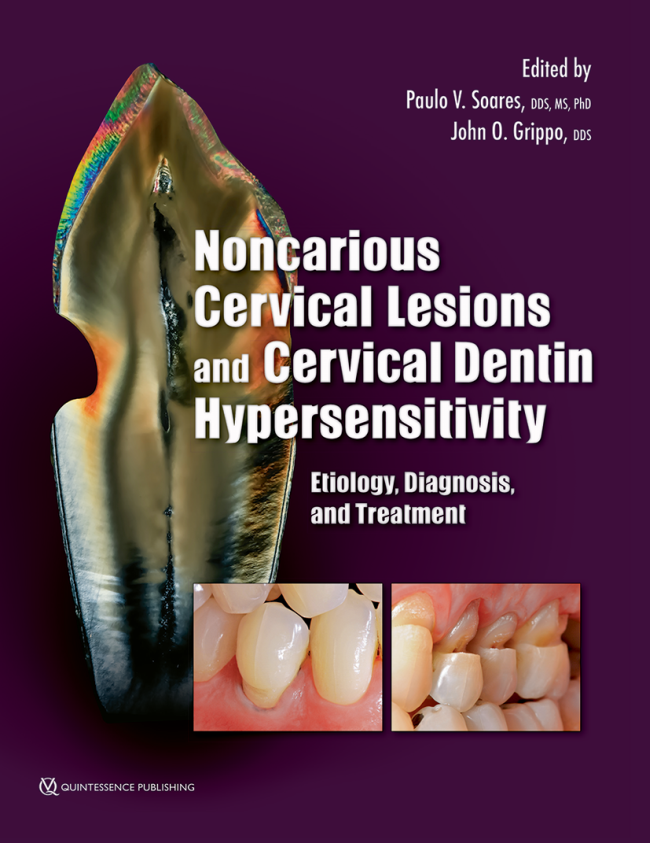Quintessence International, 8/2006
ID de PubMed (PMID): 16922020Páginas 613-619, Idioma: InglésFaye, Babacar / Kane, Abdoul Wahab / Sarr, Mouhamed / Lo, Cheikh / Ritter, Andre V. / Grippo, John O.Objective: The purpose of this preliminary investigation was to examine the presence of noncarious cervical lesions (NCCLs) among a convenience sample of non-toothbrushing subjects with Hansen's disease (leprosy).
Method and Materials: A cross-sectional sample of 102 non-toothbrushing subjects (20 to 77 years of age) was examined. The clinical parameter of interest for this study was the presence or absence of NCCLs and their probable etiology as it relates to the subjects' diet, occlusion, and use of medication. Subjects were examined clinically and interviewed according to study protocol.
Results: NCCLs were found in 48 subjects (47% of the studied sample). Widespread consumption of acidic foods and beverages acting as corrodents, signs of parafunction, and use of medication that causes xerostomia were also noted. Thus, all may be contributing factors in the etiology of NCCLs in this population.
Conclusion: This preliminary report suggests that toothbrush/dentifrice abrasion was not a factor in the etiology of NCCLs in the population studied. The authors intend to expand their study among these non-toothbrushing subjects.
Palabras clave: abfraction, corrodent, corrosion, friction, mechanisms, noncarious cervical lesion, schema, stress
Quintessence International, 6/2003
Páginas 427-434, Idioma: InglésColeman, Thomas A. / Grippo, John O. / Kinderknecht, Keith E.Objective: This retrospective study was designed to investigate changes of cervical dentin hypersensitivity (CDH) in response to occlusal equilibration. Method and materials: Written records for 250 active-care patients were randomly selected and analyzed for associations between CDH, and its resolution following occlusal equilibration. Patients in group A (treatment) and B (delayed treatment) received occlusal equilibration following the detection of verified CDH using the air indexing method. Group C patients were not detected with verified CDH during the study period of 17 years. The resolution of CDH was measured by the loss of a positive patient threshold response to air stimulation. Results: Significant associations existed between CDH, hyperfunction, parafunction, and abfractive lesions. Furthermore, it was found that occlusal equilibration resulted in the long-term resolution of CDH. Conclusions: The resolution of CDH by occlusal equilibration, thus negating the null hypothesis, suggests that further studies are indicated to evaluate the impact of these findings upon restoring and maintaining health of the masticatory system.
Quintessence International, 7/2000
Páginas 466-473, Idioma: InglésColeman, Thomas A. / Grippo, John O. / Kinderknecht, Keith E.Objective: The purpose of this retrospective study was to evaluate the association between cervical dentin hypersensitivity and the presence of abfractive lesions.
Method and materials: Written records and study casts for 250 active-care patients, selected alphabetically, were analyzed for the clinical detection of abfractive lesions and cervical dentin hypersensitivity from 1979 until 1996. Clinical diagnosis of abfractive lesions was made according to existing literature descriptions of these hard tissue lesions. Cervical dentin hypersensitivity was diagnosed when a verified positive threshold patient response was found during tooth evaluation by the air indexing method. Patient groups I and II were formed solely on the basis of the presence or absence, respectively, of a verified positive threshold patient response of cervical dentin to air.
Results: A significant association was found between air-indexed cervical hypersensitivity and the presence of abfractive lesions. The primary locations for both cervical hypersensitivity and abfractive lesions were the buccal surfaces of posterior teeth.
Conclusion: This long-term retrospective study found a positive association between cervical dentin hypersensitivity and abfractive lesions. The correlative nature of this study suggests the need for further investigation.
Palabras clave: abfractive lesion, air indexing method, Fluid Control Block, verified positive threshold patient response





